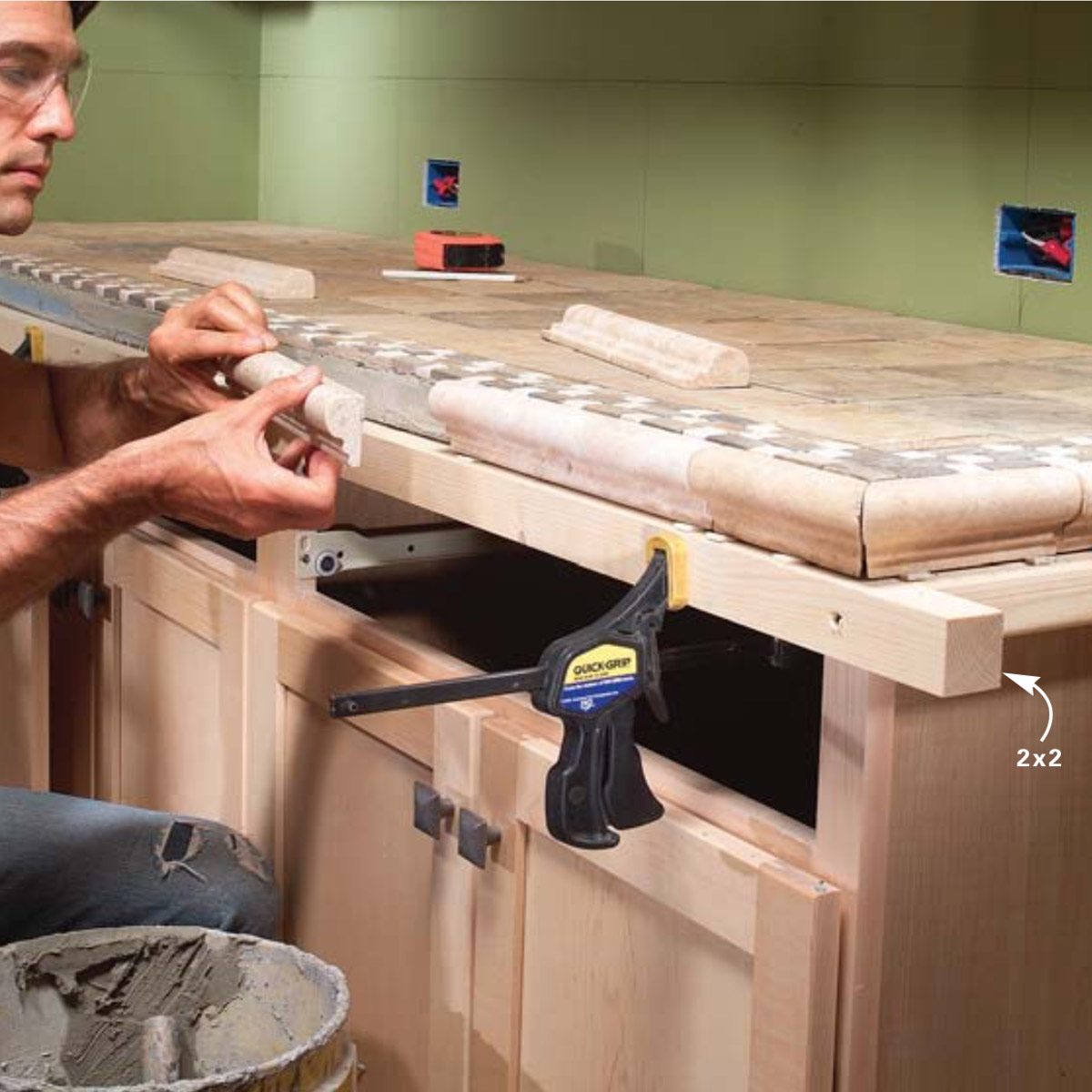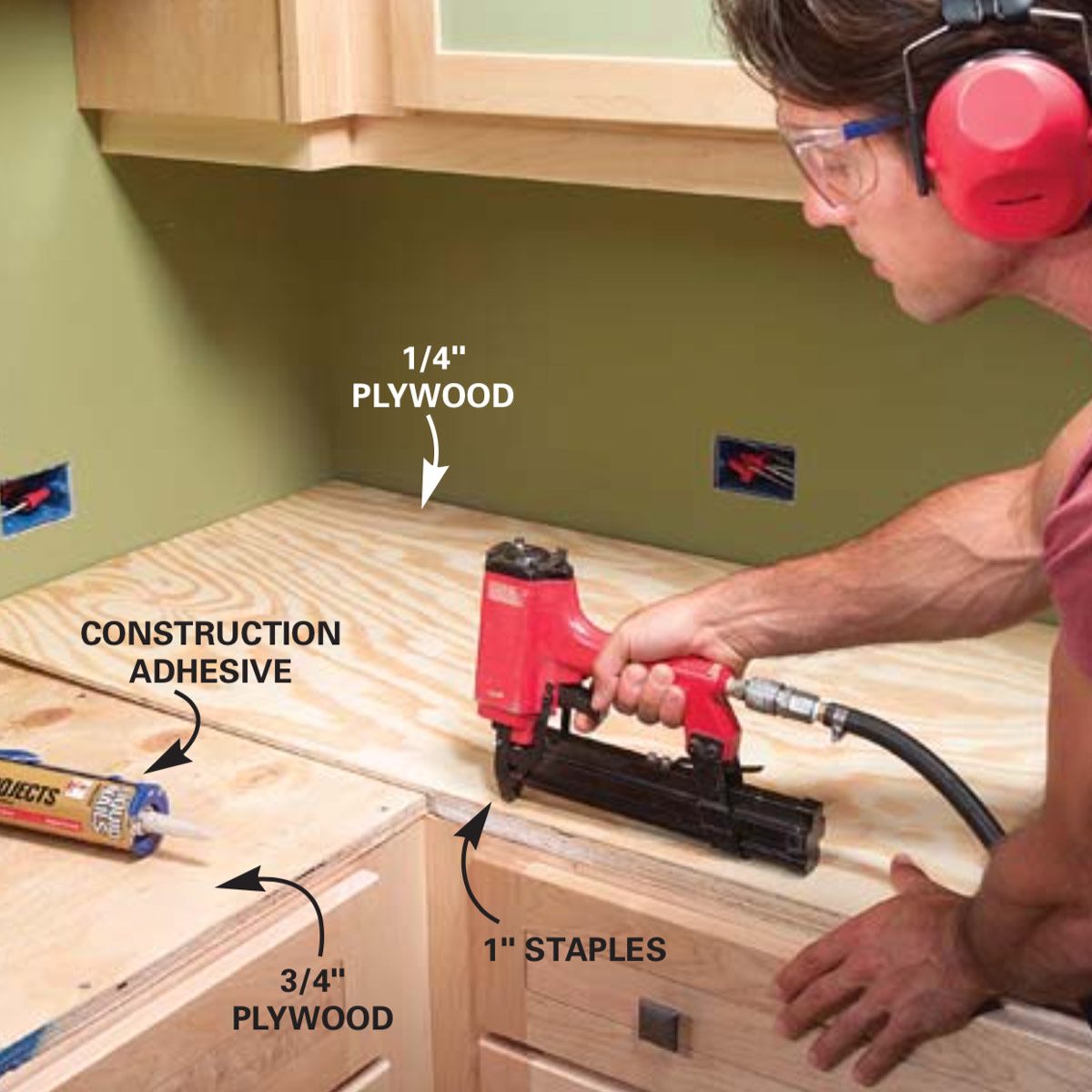Installing tile countertops is an excellent way to upgrade your kitchen or bathroom, adding a touch of elegance and durability to your space. With a wide range of tile options available, from classic ceramic to luxurious natural stone, you can create a countertop that perfectly complements your style and needs.
In this comprehensive guide, we will explore the different methods of installing tile countertops, help you select the right tiles for your project, and provide you with a detailed list of the tools and materials you’ll need. We’ll also discuss important design considerations and share tips on creating a stunning tile countertop that will last for years to come.
Installation Methods
Installing tile countertops requires meticulous planning and execution. Several methods are available, each with its advantages and drawbacks. Understanding these methods is crucial for achieving a durable and aesthetically pleasing countertop.
Thin-Set Method
Thin-set is a popular method due to its ease of application and affordability. It involves spreading a thin layer of mortar (a mixture of cement, sand, and water) onto the substrate and setting the tiles into it. The mortar provides a strong bond between the tiles and the substrate.
- Pros:
- Cost-effective
- Easy to apply
- Suitable for various substrates
- Cons:
- May require additional support for heavy tiles
- Can be messy and time-consuming
Mortar Method
The mortar method involves using a thicker layer of mortar to embed the tiles. This method provides superior strength and durability, making it ideal for heavy tiles or areas with high traffic.
- Pros:
- Very strong and durable
- Suitable for large or heavy tiles
- Cons:
- More labor-intensive
- Requires more time to set
Epoxy Method
Epoxy is a high-performance adhesive that creates an extremely strong bond between the tiles and the substrate. It is often used in commercial applications or areas where durability is paramount.
- Pros:
- Exceptional strength and durability
- Resistant to chemicals and moisture
- Can be used on a variety of substrates
- Cons:
- Expensive
- Requires specialized tools and expertise
Tile Selection

Selecting the right tiles for your countertops is crucial to achieve the desired aesthetic and functionality. With a wide range of options available, it’s essential to consider various factors to make an informed decision.
Types of Tiles
Tiles for countertops come in various materials, each with unique characteristics:
- Ceramic Tiles:Made from clay and fired at high temperatures, ceramic tiles are durable, easy to clean, and available in a wide range of colors and patterns.
- Porcelain Tiles:Similar to ceramic tiles but made from denser clay, porcelain tiles are even more durable, water-resistant, and stain-resistant.
- Natural Stone Tiles:Sourced from natural materials like marble, granite, or slate, natural stone tiles offer a luxurious and unique look but require proper sealing and maintenance.
Factors to Consider
When choosing tiles for countertops, several factors should be taken into account:
- Durability:Consider the amount of wear and tear your countertops will endure and choose tiles that can withstand daily use.
- Style:The tiles should complement the overall design of your kitchen or bathroom, whether it’s traditional, modern, or somewhere in between.
- Budget:Tiles vary in price depending on material, size, and design. Set a budget and research options that fit within it.
- Maintenance:Some tiles require more frequent cleaning and maintenance than others. Choose tiles that are easy to care for and fit your lifestyle.
Tips for Choosing Tiles, Installing tile countertops
Here are some tips for selecting the right tiles for your countertops:
- Visit tile showrooms or browse online catalogs to explore different options.
- Consider the size of your countertops and choose tiles that will minimize the number of cuts and waste.
- Request samples of the tiles you’re interested in to see how they look in your space.
- Don’t be afraid to mix and match different tiles to create a unique and personalized look.
Tools and Materials

Installing tile countertops requires the right tools and materials to ensure a professional-looking finish.Here’s a list of essential tools and materials you’ll need, along with their purposes:
Measuring and Marking Tools
Measuring tape
For accurate measurements and layout
Level
To ensure the tiles are installed level
Chalk line
For marking straight lines
Pencil
For marking cuts and lines on the tiles
Cutting Tools
Tile saw
A specialized saw for cutting tiles precisely
Wet saw
A tile saw that uses water to cool the blade, reducing dust
Angle grinder
For cutting intricate shapes or bevels
Tile nippers
For making small cuts or shaping tiles
Adhesive and Grout
Thin-set mortar
A type of adhesive used to bond tiles to the substrate
Grout
A material used to fill the gaps between tiles
Grout float
A tool used to apply and smooth the grout
Other Essential Tools
Trowel
For applying thin-set mortar
Float
For smoothing and leveling the thin-set mortar
Sponge
For cleaning up excess thin-set and grout
Tile spacers
To ensure even spacing between tiles
Knee pads
For comfort while kneeling during installation
Design Considerations

The design of your tile countertop can make a big impact on the overall look and feel of your kitchen or bathroom. When choosing a design, there are a few things to keep in mind:
Layout:The layout of your tiles can create different looks. For example, a staggered layout can create a more casual look, while a straight layout can create a more formal look.
Pattern:There are many different tile patterns to choose from, such as mosaics, herringbone, and subway tile. The pattern you choose can help to create a unique look for your countertop.
Grout color:The color of your grout can also affect the look of your countertop. A dark grout color can create a more dramatic look, while a light grout color can create a more subtle look.
Tips for Creating a Stunning Tile Countertop Design
Here are a few tips for creating a stunning tile countertop design:
- Start by choosing a tile that you love. The tile you choose should be something that you will enjoy looking at for years to come.
- Consider the overall style of your kitchen or bathroom when choosing a tile design. You want the tile to complement the other elements in the room.
- Don’t be afraid to experiment with different layouts and patterns. There are no rules when it comes to tile design, so have fun and create a look that you love.
Examples of Different Tile Countertop Designs
Here are a few examples of different tile countertop designs:
- A white subway tile countertop with a gray grout can create a classic and timeless look.
- A black mosaic tile countertop with a white grout can create a dramatic and modern look.
- A herringbone tile countertop with a beige grout can create a warm and inviting look.
Final Conclusion: Installing Tile Countertops

Whether you’re a seasoned DIYer or a first-time homeowner, installing tile countertops is a rewarding project that can transform your kitchen or bathroom into a space you’ll love. By following the steps Artikeld in this guide, you can create a beautiful and functional countertop that will add value to your home for years to come.
